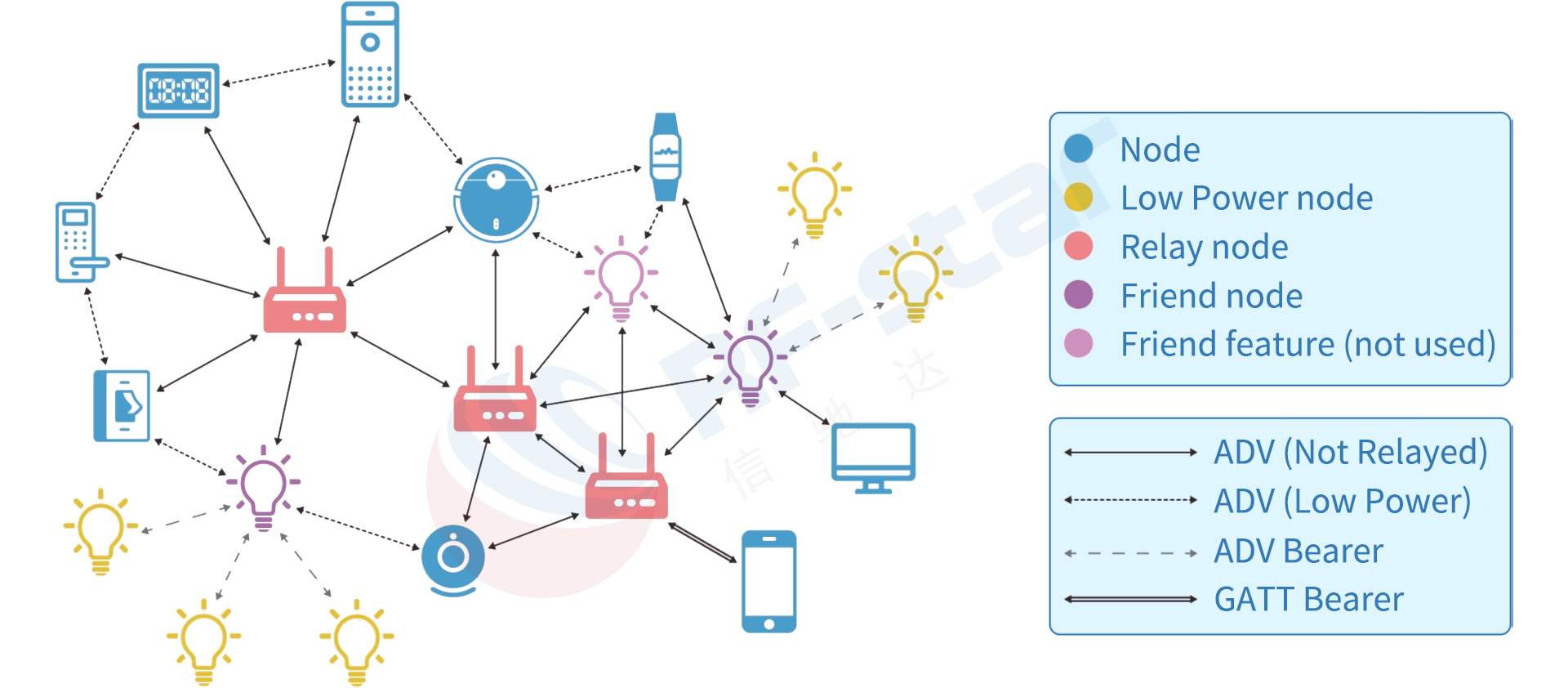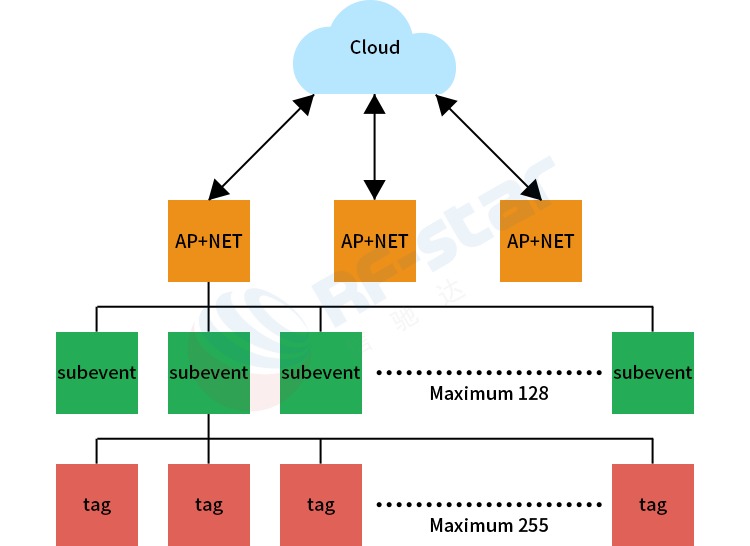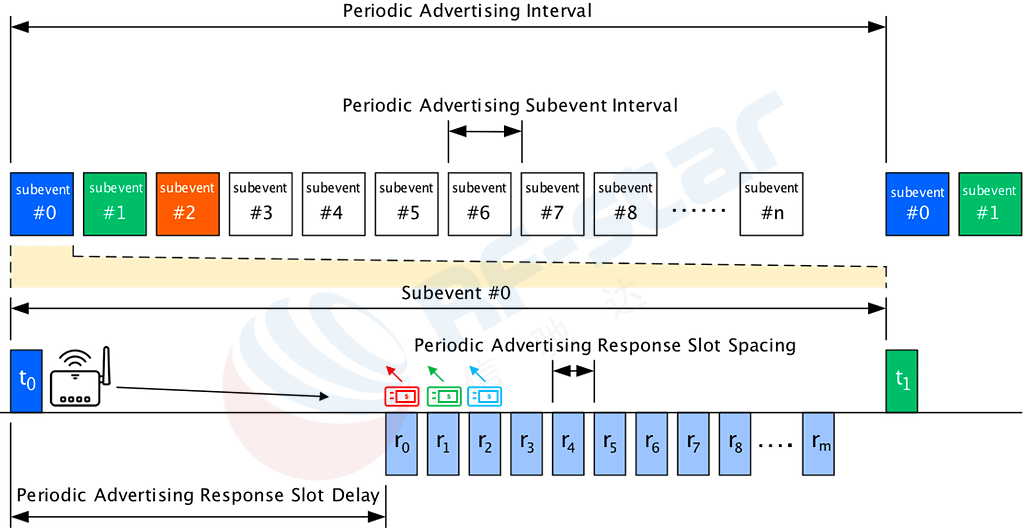In the intelligent era of the Internet of Everything, are you still troubled by how to manage hundreds or thousands of smart devices? Traditional Bluetooth Low Energy connections have limited capacity, while Mesh networking is complex and power-hungry. These have become bottlenecks restricting the large-scale deployment of the Internet of Things.
Leveraging the industry-leading Silicon Labs chip platform, RF-star Technology has launched a low-power module featuring PAwR functionality, truly achieving large-scale bidirectional one-to-many communication. Theoretically, a single central device can simultaneously perform bidirectional data exchange with up to 32,640 end devices, completely breaking through the device number limitations of traditional Bluetooth connections and making device management unprecedentedly simple and efficient. Now, let's witness how this technology can create new value for your business!

Traditional Connected One-to-Many: Typically refers to a host taking turns maintaining connections with a few to several dozen slave devices via time-division multiplexing. The number is limited, and management complexity increases significantly with the number of devices.

Broadcast-Based One-to-Many: Uses a Broadcaster/Observer model. One device broadcasts, and numerous devices can receive. However, this is one-way; observers cannot reply, and all devices receive the broadcast, lacking privacy and targeting.

Bluetooth Mesh Networking One-to-Many: Employs a "flooding" network management approach. Each node that receives a message forwards it, relaying it via other nodes until the target node receives it. Theoretically, a network can accommodate tens of thousands of nodes, enabling many-to-many communication. However, the network is complex, and power consumption and latency are difficult to control.

PAwR One-to-Many: Stands for Periodic Advertising with Responses, a revolutionary feature introduced in the Bluetooth Core Specification version 5.4. According to the Bluetooth SIG specification, one PAwR Broadcaster can simultaneously engage in bidirectional communication with up to tens of thousands of PAwR Subscribers – an astonishing upper limit of 32,640.

We can imagine it as a teacher (the Broadcaster) in a classroom asking questions to students according to a fixed, recurring schedule. This schedule is divided into a large number of extremely short time windows.
The detailed workflow is as follows:
1. Establish Synchronization: The Broadcaster continuously sends a periodic advertising stream containing specific timing information. Thousands of Subscriber devices listen to this advertising stream and maintain precise synchronization with the Broadcaster's timing. They know in which specific time window(s) they are assigned to communicate.
2. Send Commands: Within its own time windows, the Broadcaster can send public data to all Subscribers or send private data targeted at a specific "group" or even a single device.
3. Receive Responses: At the precise time window allocated to a Subscriber, the Subscriber is "awakened" to listen for any commands directed to it. If there is data to send back (like sensor readings, status acknowledgments), it quickly replies to the Broadcaster within this designated window.
4. Cycle Repeats: This process cycles at a very high frequency. Because each time window is extremely short, the Broadcaster can complete one "conversation" with a massive number of devices within one cycle, while all devices spend most of their time in a deep sleep state.


Simplified Deployment: Each sensor tag joins the PAwR network simply by setting a unique Group ID and Device ID via an APP or command, increasing network deployment efficiency by 80%.
* System Initialization: The server sends the Tag's ID information to the AP, which adds the Tag to its management list, completing the "registration".
* Status Monitoring: The server can query the AP at any time for the list of all bound Tags and their status (like RSSI signal strength). Monitor the status of tens of thousands of devices in real-time, always maintaining a global overview.
Precise Control: The server sends a command for a specific Tag to the AP. The AP delivers the command via PAwR broadcast, triggering an audible/visual alert (like a buzzer or LED) on the corresponding Tag. After confirming the Tag, the server sends a "complete" command, the AP controls the Tag to stop the alert and removes it from the active list. The time-slot-based communication ensures precise command delivery and real-time status feedback, guaranteeing communication reliability.
Ultra-Low Power Consumption: Innovative time-slot wake-up mechanism keeps devices in deep sleep most of the time, enabling battery life of several years.
Elastic Scalability: A single network supports tens of thousands of devices, allowing flexible capacity expansion according to business needs, protecting long-term investment value.
Flexible Customization: RF-star can provide deeply customized hardware and software Bluetooth module solutions tailored to specific application scenarios.


Industrial IoT (IIoT)
Factory equipment status monitoring, warehouse and logistics management, supporting simultaneous data reporting from thousands of sensors (e.g., temperature, vibration sensors), building a digital operation and maintenance system.


